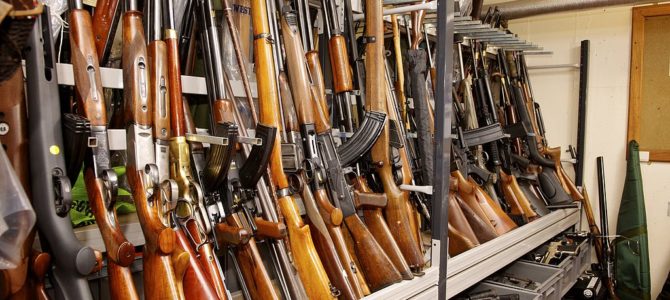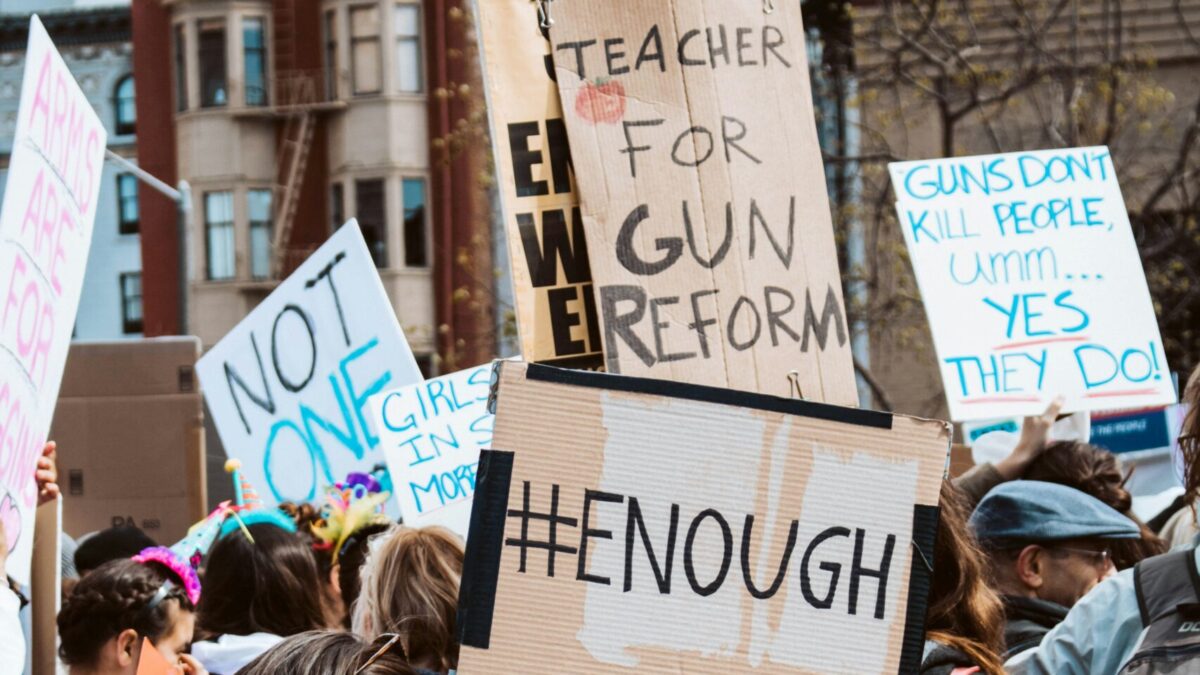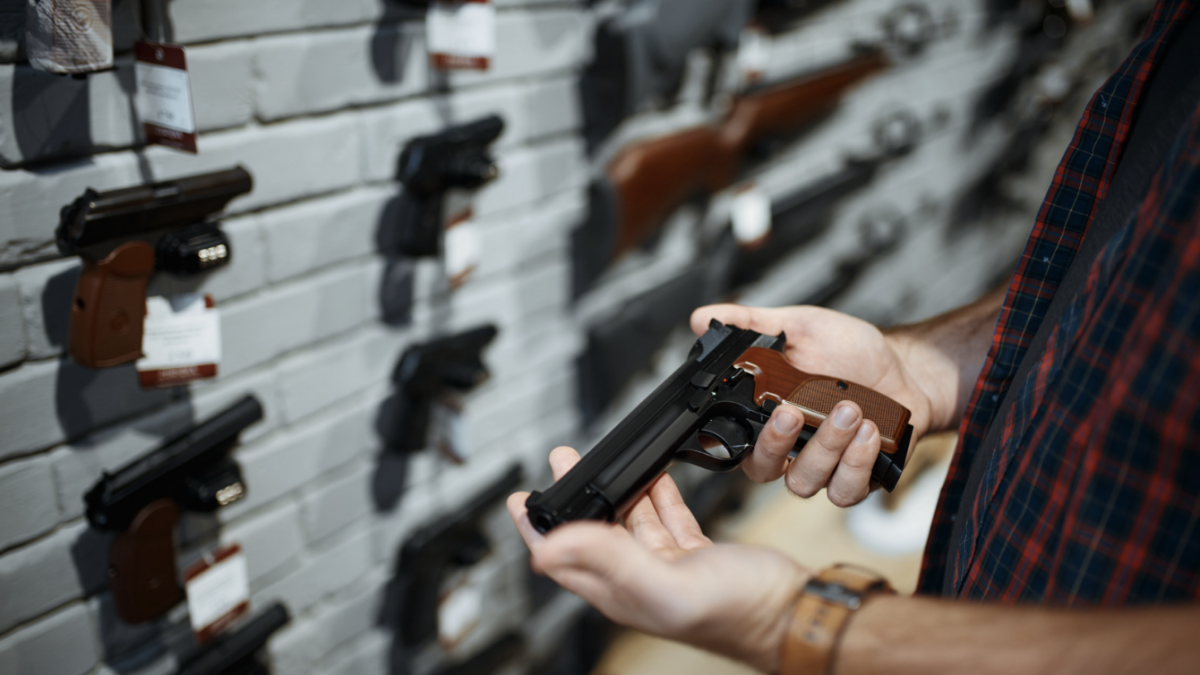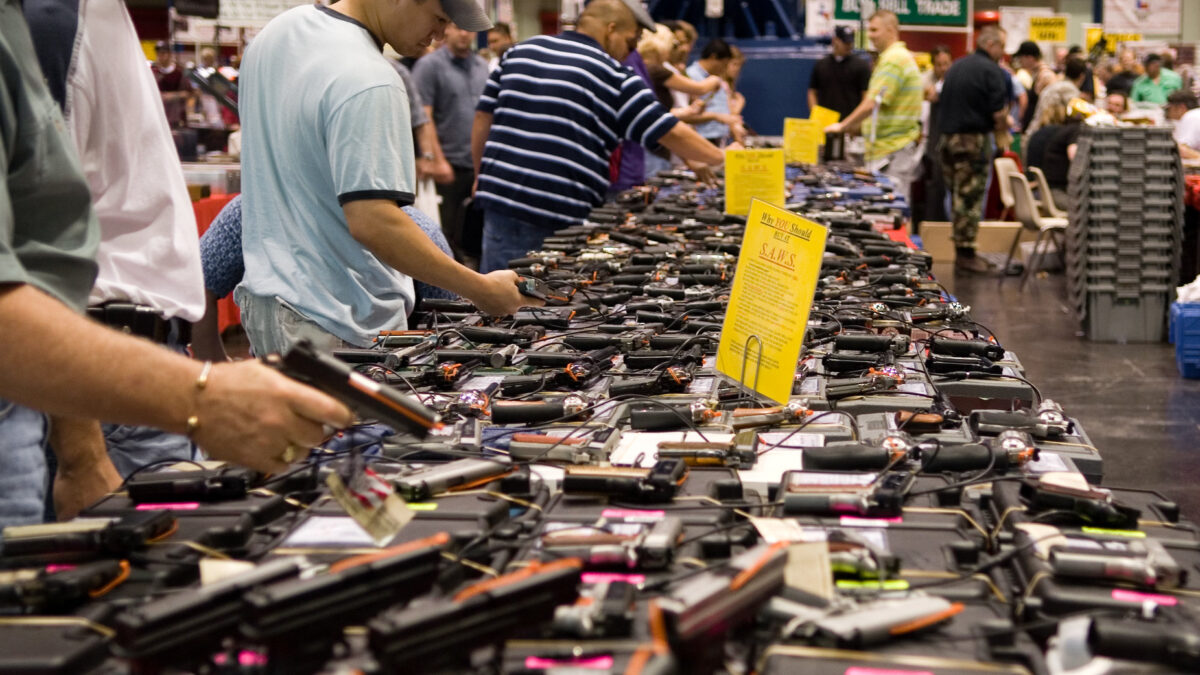
In December, at President Trump’s direction, the Bureau of Alcohol, Tobacco, Firearms and Explosives (BATFE) issued a ruling that bump stocks “are ‘machineguns’ as defined by the National Firearms Act of 1934” (NFA). Furthermore, it declared that owners of the contraptions must destroy them or turn them over to the federal government without compensation, or be guilty of a federal felony. For now, I leave it to others to address the BATFE’s plan to deprive law-abiding Americans of lawfully acquired private property without compensation.
As Sean Davis noted, a bump stock is not a “machinegun.” The NFA defines “machinegun” to include several things, including a firearm that fires “automatically more than one shot, without manual reloading, by a single function of the trigger,” “any part designed and intended solely and exclusively, or combination of parts designed and intended, for use in converting a weapon into a machinegun,” and “any combination of parts from which a machinegun can be assembled.”
The BATFE claims that the second and, by extension, all three of these definitions apply in this instance. It says, “these devices [bump stocks] convert an otherwise semiautomatic firearm into a machinegun.”
The BATFE Knows It Is Lying
As Davis noted, in 2010 the agency said bump stocks weren’t “machineguns,” that a bump stock “performs no automatic function when installed. In order to use the installed device [the bump stock], the shooter must apply constant forward pressure with the non-shooting hand and constant rearward pressure with the shooting hand.”
Rejecting its 2010 determination, the BATFE now says that a bump stock causes a semi-automatic firearm to fire “in a manner that allows the trigger to reset and continue firing without additional physical manipulation of the trigger by the shooter.”
In making this claim, the BATFE destroys its claim that a bump stock is a “machinegun.” Set aside for a moment the BATFE’s claim that with a bump stock attached to a firearm, the stock, not the person using the firearm, manipulates the trigger. If the trigger of a semi-automatic firearm resets between shots, the firearm does not fire “automatically,” it fires semi-automatically. “Trigger reset” and “fires automatically” are mutually exclusive.
As it applies to firearms, “automatically” means that a firearm will continue firing as long as the trigger is held down, prevented from resetting between shots, while other parts of the firearm allow the firearm to fire repeatedly. It is not a perfect analogy, but the difference between what happens with a semi-automatic firearm, whether or not it is equipped with a bump stock, and what happens with a machinegun is akin to the difference between a bicycle and a motorcycle.
With a bicycle, you have to step on the pedals repeatedly to rotate the wheels. With a motorcycle, you twist the throttle once, hold it in place, and the engine will continue sparking, pushing pistons, and so on, to rotate the wheels. With a bump stock attached, a semi-automatic firearm fires exactly like it does without the contraption, semi-automatically (i.e., with the trigger resetting between shots), not “automatically.”
Now consider the BATFE’s claim that with a bump stock attached to a firearm, the stock, not the person using the firearm, manipulates the trigger. As everyone knows, a person fires a firearm by pulling its trigger rearward. That’s why, in 2010, the agency said that when using a firearm equipped with a bump stock, the person using it must apply “rearward pressure with the shooting hand.”
The BATFE now says that with a bump stock attached, the user doesn’t pull the trigger, the stock pushes the trigger against the user’s finger. Again, this contradicts the agency’s earlier determination. However, regardless of who or what pulls or pushes the trigger, with or without a bump stock attached, the trigger moves rearward, separately, for each shot and resets after each shot, therefore the firearm fires semi-automatically, not “automatically,” and therefore it is not a “machinegun” as defined in the NFA.
Furthermore, even if a bump stock pulled or pushed a trigger, or made it do a somersault, it could not be a part “designed . . . for use in converting” a firearm into a machinegun. That’s because a part that converts a firearm into a machinegun does so not by affecting the trigger, but by altering the interaction of other parts of the firearm.
None of this is intended to defend bump stocks generally. The only two noteworthy things that can be said about them are that they were misused to commit a high-profile, multiple-victim murder and they contribute nothing to the defensive uses of firearms, defensive firearm training, hunting, marksmanship competitions, and almost all forms of recreational shooting.
But such is neither here nor there. The only thing that matters in this instance is that bump stocks do not meet any definition of “machinegun” under federal law.
Is the Ban BATFE’s Fault Or Trump’s?
Some might say the BATFE should not be blamed for its ruling. After all, President Trump ordered the agency to come up with whatever rationale it could for banning bump stocks. It appears that Trump ordered the contraptions banned after their use in a crime because his instincts are authoritarian, he isn’t particularly concerned with facts, and perhaps he listens too much to a certain liberal family member whose reaction to every unhappy turn of events around the world is “Do something.”
Trump ordered the BATFE to ban bump stocks because he didn’t want Congress to do it, or to try, because that would have put some Republicans in the position of having to vote against a ban and angering liberal and moderate voters, or voting for a ban and angering conservative voters, losing their next elections either way. Furthermore, if Trump, who previously promised to defend the Second Amendment to the hilt, signed a legislative ban into law, he would lose enough votes to forfeit his chance of winning reelection in 2020.
Regardless, BATFE should be blamed because this is only one of many times the agency has abused its power, sometimes with fatal consequences.
BATFE’s 50-Year History of Misconduct
In 1986, Congress passed a law to end BATFE misconduct related to its enforcement of the Gun Control Act of 1968. So egregious had the agency’s actions been over the previous 18 years, the name of the 1986 law tells the story: The Firearms Owners’ Protection Act.
In 1989, at the urging of then-Drug Czar William Bennett, with the approval of President George H.W. Bush, the BATFE changed its interpretation of firearm importation law, 18 U.S.C. 925(d)(3), to ban the importation of 43 makes and models of semi-automatic rifles it had for years previously approved for importation.
The law should be amended so that a firearm’s usefulness for defensive purposes justifies its importation. But, even as written, it provides for the importation of the rifles the BATFE banned. The law states: “The Attorney General [by direction, the BATFE] shall authorize a firearm or ammunition to be imported . . . if the firearm or ammunition . . . is generally recognized as particularly suitable for or readily adaptable to sporting purposes.”
The rifles the BATFE banned are of the type used in defensive marksmanship competitions. So, to justify its re-interpretation of the law, the BATFE declared that while “organized marksmanship competitions” were “sporting purposes,” such competitions did not include those based upon defensive rifle skills, even though such competitions have governing bodies, rulebooks, sponsors, and prizes for winners, like other organized competitive sports, and they are the most popular rifle marksmanship competitions in the country.
In 1993, at the direction of President Bill Clinton, the BATFE ignored its long-standing “Handgun Factoring Criteria,” which the agency uses to ban the importation of the least expensive, smallest, lightest, lowest-caliber handguns, in order to ban the importation of particularly expensive, large, heavy, larger-caliber handguns.
In 1994, again at Clinton’s direction, the BATFE again changed its interpretation of “sporting purposes” to restrict several shotguns as “destructive devices.” In 1998, the BATFE changed its interpretation yet again, to prohibit the importation of rifles that were being manufactured to comply with its 1989 ruling. A spokesman for the Clinton White House said, “We’re taking the law and bending it as far as we can to capture a whole new class of guns.”
In 2009, the BATFE teamed with NBC-5 Chicago “fake news” reporter Kim Vatis to deceive TV viewers by talking about semi-automatics, then showing Vatis firing a machinegun, waving the gun around, spraying bullets wildly.
In 2015, presumably at the urging of President Barack Obama, the BATFE attempted to suppress the legitimate use of AR-15s by banning M855, the second most common ammunition used in the rifles, by reinterpreting another federal law, 18 USC 921(a)(17)(B) and (C). Years before, the BATFE had incorrectly declared M855 to be “armor piercing ammunition.” However, it had granted M855 the law’s exemption for ammunition “primarily intended to be used for sporting purposes.”
At a minimum, the law’s exemption should be extended to include bullets primarily intended for defensive purposes. However, in any case, in 2015 the BATFE tried to rescind M855’s exemption, falsely claiming that whether a bullet is exempt hinged not on the “sporting purposes” exemption prescribed in the law, but on whether the bullet could be used in handgun. M855 survived only because the Republican chairman of the House subcommittee that controls the BATFE’s budget read the agency the proverbial Riot Act.
BATFE Misconduct Also Gets People Killed
In 1992, in the Ruby Ridge incident, BATFE agents badgered an Idaho man into illegally shortening the barrel of a shotgun, which among other things led to FBI sniper Lon Horiuchi killing an unarmed mother who was holding a child in her arms.
In 1993, the BATFE provided false information to a federal judge to obtain a search warrant of a large Branch Davidian residence in Waco, Texas. As David Kopel and Dr. Paul H. Blackman noted in their report on the debacle, the BATFE, hoping to get positive publicity to compensate for adverse publicity the agency had received over sexual harassment and racial discrimination claims by BATFE personnel over the previous couple of years, allowed reporters to come along for the show when its S.W.A.T. team rolled up in a cattle trailer, jumped out, and assaulted the house.
A gun battle ensued, four BATFE agents were killed, and the rest of the agency’s assault force retreated. (A statuette inside the BATFE’s headquarters misleadingly depicts the killed agents standing in a circle, facing outward, as if they had died while defending themselves. In fact, they were killed while atop or inside the Davidians’ house.) Weeks later, the FBI attacked the house with military equipment and the house burned to the ground, killing scores of people inside.
During the Obama administration, the BATFE ran a gun-running operation called Fast and Furious, which funneled guns from America across the border to Mexican drug cartels, almost assuredly with the knowledge of then-attorney general Eric Holder. Some of the guns were used by the cartels to murder people in Mexico, and one was used to murder U.S. Border Patrol Agent Brian Terry.
Some have argued that because of its repeated misconduct over the last 50 years, the BATFE should be abolished. Perhaps it should. However, the pressing issue for the moment is this: Presumably, the BATFE’s new ruling will be challenged in court. If judges allow the BATFE to ban bump stocks as machineguns, to lie about how firearms function mechanically, and to override laws passed by Congress whenever it wants, for whatever reason it wants, the historically corrupt agency will have a green light to go after semi-automatic firearms next. And that is what a Democrat successor to Trump could order the agency to do.









